How to Know your Rare Coins & Wheat Pennies Value: If you are new to coin collecting, one of the first things you should learn is how the condition of a coin affects its value. This condition is measured using something called a “grade.” A coin in better condition is usually worth more money. So, knowing the basics of coin grading can help you make better decisions when buying, selling, or collecting coins.
What is Coin Grading?
Coin grading is a system used to describe the condition of a coin. It helps collectors understand how much wear the coin has and how it looks overall. Coins are graded on a scale from 1 to 70. A coin with grade 1 is in the worst shape, while 70 means the coin is in perfect condition – just like it was when it was made.
Grading helps collectors know the value of a coin. You can send coins to professional grading companies. They’ll check the coin and seal it in a plastic holder with the grade written on it.
How the 1–70 Grading Scale Began
The grading scale we use today was made by Dr. William Sheldon in 1949. He first used it to grade old American large cent coins. The idea was simple: the better the coin’s condition, the higher the number and the more valuable it was. For example, a Good 4 (G-4) coin was worth $4, and a Fine 12 (F-12) was worth $12. Over time, this system became popular for grading all types of coins.
Each grade also has a short name. For instance, VF-35 means “Very Fine 35,” and some people may just call it “35.” Not every number is used – for example, you’ll see VF-30 and VF-35, but not VF-32. Some new grades like AU-59 might appear in the future if collectors feel there’s a need.
Grades Explained from Lowest to Highest
Let’s look at different grades to understand what they mean.
Poor 1, Fair 2, and Almost Good 3
The lower the number, the more heavily worn the coin. On a Poor 1 (PO-1) coin, the type and date are discernible, but not much else. You’ll typically be able to see outlines of major devices, but no detail and little to no lettering. This improves gradually through Fair 2 (FA-2) and Almost Good 3 (AG-3). Interestingly, a PO-1 is typically the most valuable of these three; many people put together “lowball sets,” where the goal is to have the lowest grade coins possible, resulting in more competition for PO-1 than FA-2 or AG-3.
Many collectors enjoy coins of this nature as there is a lot of history associated with them, as opposed to some uncirculated specimens that only saw unexciting movement from one safe to another, trapped in a canvas bag for 150 years. Just imagine the stories some of these well-worn coins could tell us!
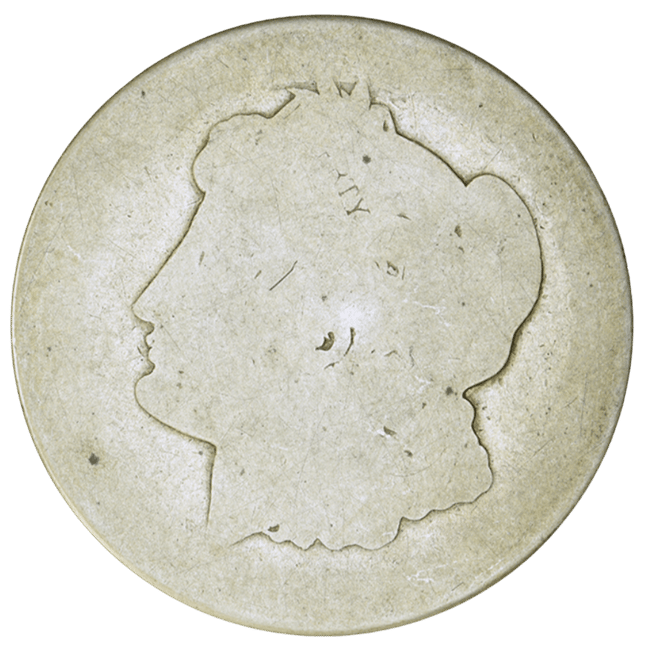
PO-1 Morgan Dollar
Good 4, 6, and Very Good 8, 10
The lowest grade where the design really starts to become visible is Good 4 (G-4). Most of the lettering is visible, though not all, or it may be very hard to make out. Coins from G-4 through Very Good 10 (VG-10) show quite a range in terms of how much detail is visible, but all are heavily circulated and clearly spent a lot of time in use.
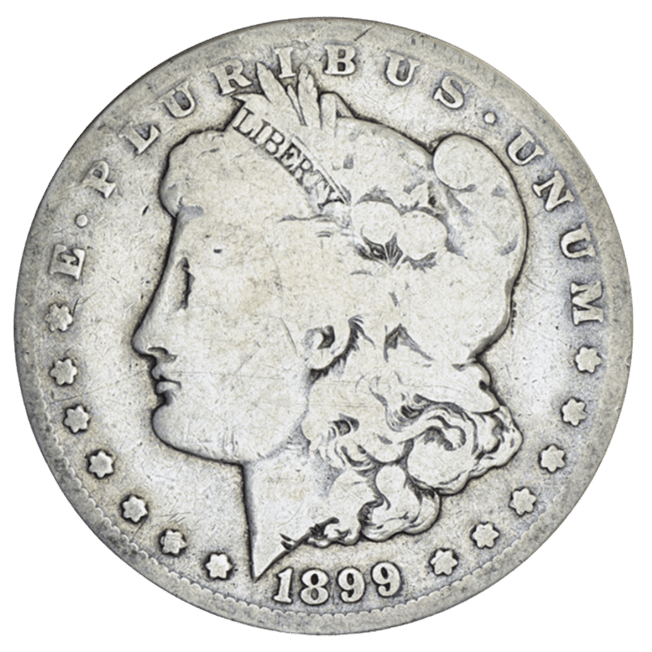
G-4 Morgan Dollar
Fine 12, 15, and Very Fine 20, 25, 30, 35
Starting at Fine 12 (F-12), the lettering and digits should all be clear and crisp. All the way up through Very Fine 35 (VF-35), circulation wear is still easily visible on high points with the naked eye. This wear will be visible down to recessed areas at F-12, but only noticeable on high points by VF-35.

F-15 Morgan Dollar
Extremely Fine 40 and 45
Extremely Fine 40 (EF-40 or XF-40) is the lowest grade where you might not notice any circulation wear at a glance. However, under close inspection, EF-40 and EF-45 will both display minor wear on the high points, and with a bit of practice, it becomes easy to spot. Traces of original mint luster may remain in areas protected by design elements.
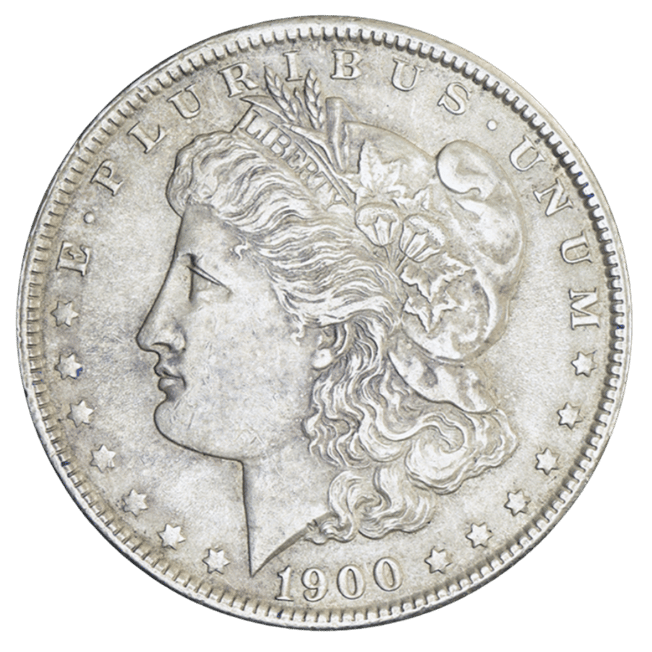
EF-45 Morgan Dollar
Almost Uncirculated 50, 53, 55, and 58
Almost Uncirculated (AU) coins are generally desirable and are commonly quite attractive. These pieces will display very little wear, usually discernible only by minor softness or color difference on the highest points of the design. They should show some original mint luster, and can be easy to mistake for uncirculated specimens to the untrained eye. In general, lower-end AU coins (ex. AU-50) will have low eye appeal, with a lot of bag marks, low luster, etc.
AU-58 coins, however, are typically very well struck and appealing pieces that have almost unnoticeable wear. AU-58 pieces commonly come with a bit of a premium thanks to collectors working on “everyman sets,” which are entirely comprised of coins in AU-58 or below. Again, many collectors enjoy coins that saw some use as actual money but still show a great deal of originality, instead of pieces that just languished in vaults.
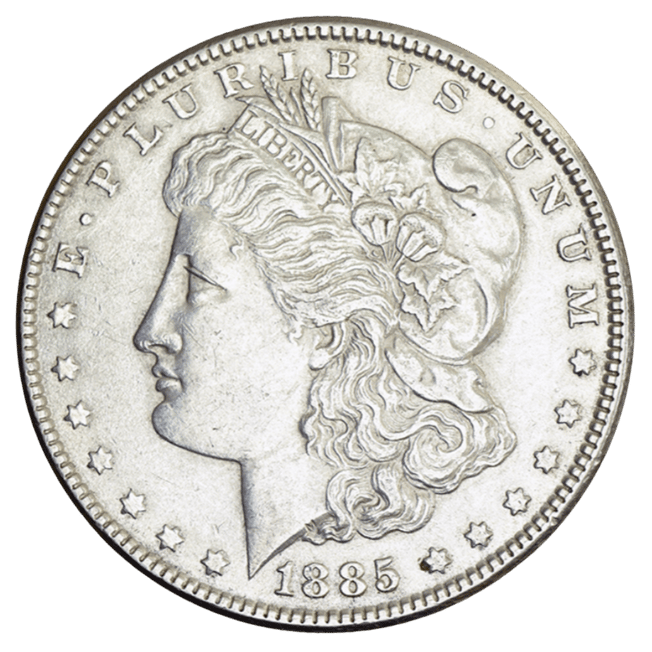
AU-58 Morgan Dollar
Mint State 60-70
No numbers are skipped between 60 and 70, and all of them are considered Mint State (MS). This is largely due to the intense trading of some uncirculated coins, which tend to be in greater demand by advanced numismatists. Minute differences in contact marks can translate into huge prices. These are coins that show no evidence of circulation wear and look the same as when they were first minted.
The differences within Mint State grades are determined by the quality of the strike, luster, severity and location of contact marks, and most importantly, the general eye appeal of the piece. An MS-60 coin is usually a rather unattractive coin, often accompanied by numerous bag marks and very weak strike. An MS-70 is near impossible to find among many older types, and for the most part, only modern issues are able to attain an MS-70. Terms like Choice Brilliant Uncirculated or “Gem BU” are commonly used numismatic jargon for MS-63 and MS-65 respectively.
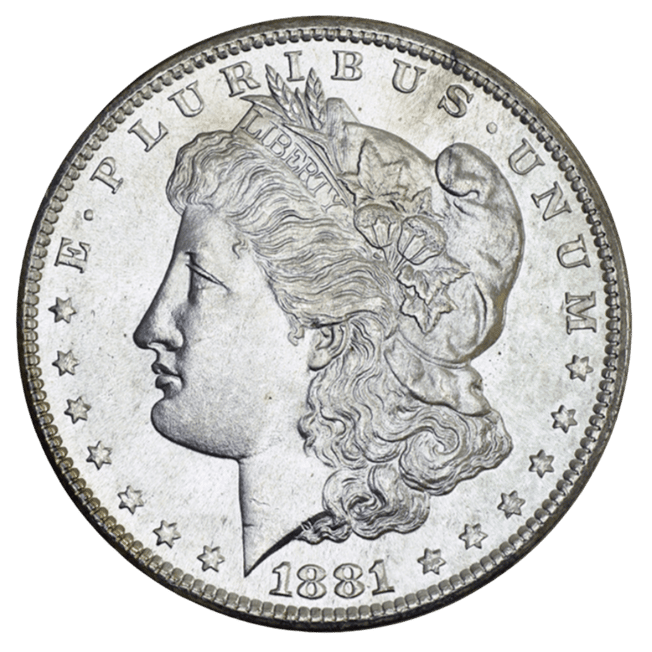
MS-67 Morgan Dollar
Details Grades
There are multiple flaws that are considered undesirable and will result in a “details” grade, lowering the value of the coin. If it has been cleaned, scratched, mishandled, or suffered other environmental damage, it will be considered problematic. These pieces still receive a verbal descriptor of the overall condition, but are not assigned a number (ex. EF Details).
For more information about grading, check out the ANA’s Online Grading Resources.
Happy Collecting!
FAQ
What is coin grading?
Coin grading is the process of checking a coin’s condition to determine its value. It uses a 1 to 70 scale, where 1 is poor condition and 70 is perfect.
What does AU-58 mean in coins?
AU-58 means ‘Almost Uncirculated’. These coins have very slight signs of wear but still have excellent eye appeal and are popular with collectors.
What is MS-70 grade in coins?
MS-70 is the highest possible grade for a coin, meaning it has no flaws at all. It looks exactly as it did when it was made and is often seen in modern coins.
Can old worn coins be valuable?
Yes, even heavily worn coins can be valuable, especially if they are rare or part of a low-grade ‘lowball set’. PO-1 coins are often in demand.
What is a details grade in coins?
A ‘Details’ grade is given to coins that are damaged, cleaned, or altered. They are not given a number but still described by condition, like ‘VF Details’.















Was wondering how much my coins are worth